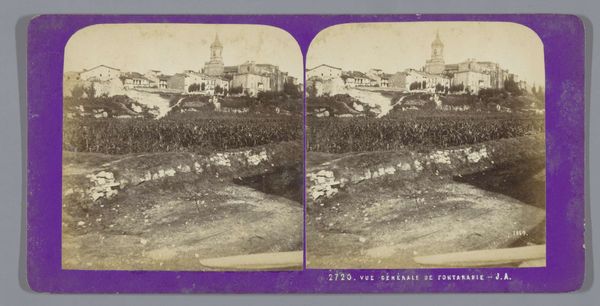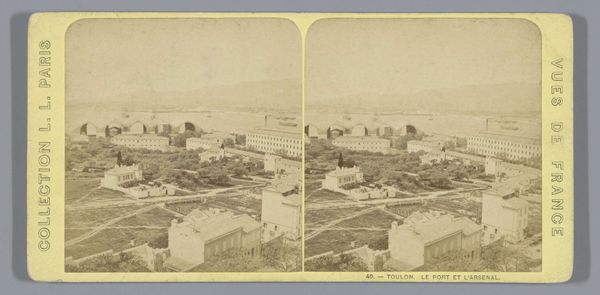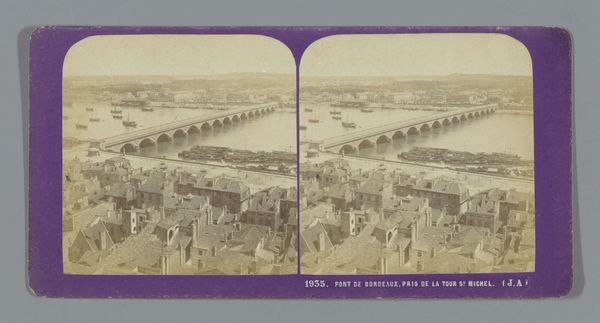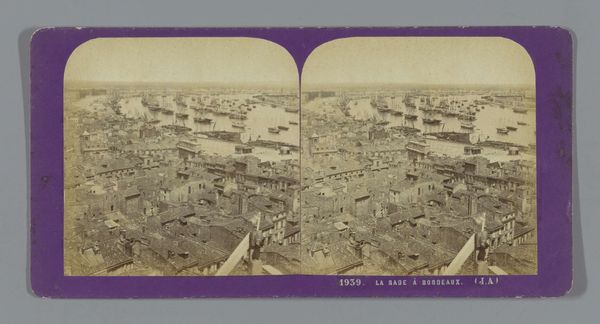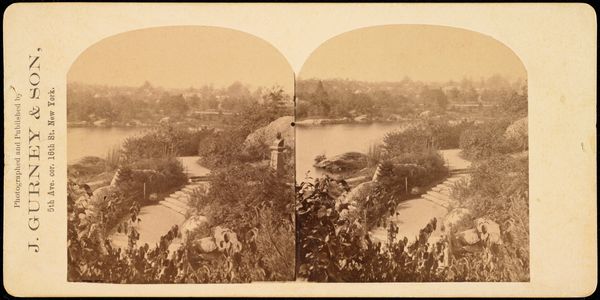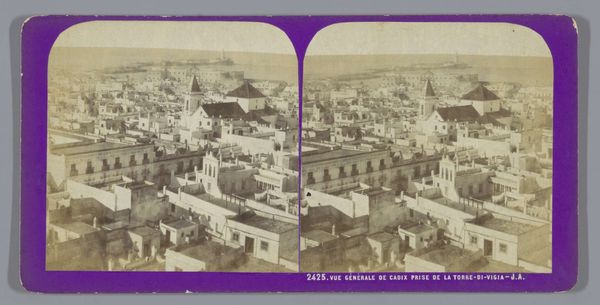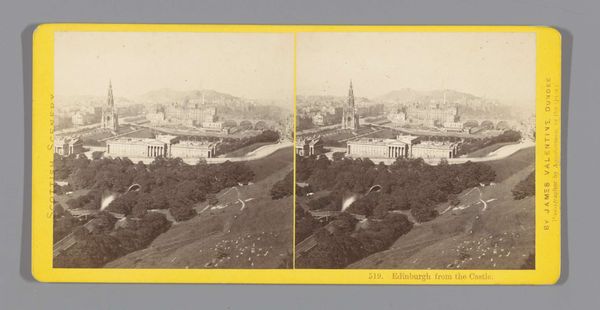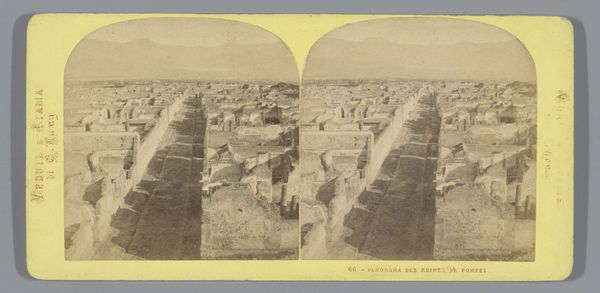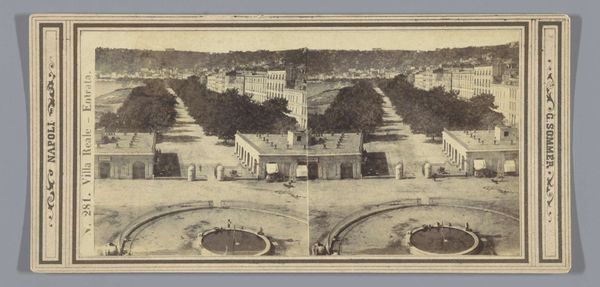
photography
#
photography
#
cityscape
#
realism
Dimensions: height 85 mm, width 170 mm
Copyright: Rijks Museum: Open Domain
Curator: What an evocative image! This is a photograph titled "Gezicht op Nîmes," or "View of Nîmes," captured by Jean Andrieu sometime between 1862 and 1876. Editor: My first impression is of stillness. The sepia tones lend a quiet, almost ghostly atmosphere to what I imagine was once a bustling cityscape. Curator: It's interesting you say that. I see the technological process, the meticulous, slow labor required to produce such an image during that era, it involved careful control of light and chemistry. It makes you consider the resources needed for such a production. Editor: Exactly, it brings forth questions of access and representation in mid-19th century France. Who was allowed to participate in such art creation? It makes me question who held power within Nîmes during this period. Was this artistic activity tied into social privilege? Curator: Very true. Considering the realist style of this piece, how much does it document accurately? Is this simply a view, or a narrative of expansion and societal organization of France as an imperial force in that time. Editor: Yes, it feels crucial to remember that such seemingly neutral cityscapes played a role in constructing the national image. It invites a dialogue with the period’s urban planning projects, designed as mechanisms of social control. This era of photographic realism intersects complexly with colonialism and the creation of constructed national identity. Curator: It really pushes boundaries as it is more than just capturing; Andrieu is involved in historical processes. It challenges my view to not consider historical factors when analyzing work, despite wanting to analyze solely physical, raw creation. Editor: Precisely! It forces one to question how we understand the role art plays in socio-political dialogues. Photography captures so much, and that capturing becomes its own entity. Curator: I agree entirely. By investigating materials of photographs we gain a clear insight and consideration for artistic vision, technique, material, labor. And understanding these details together creates art as both artistic labor and powerful statement. Editor: Definitely, analyzing the work by Jean Andrieu today presents important considerations to our current visual landscapes. A blending of our understanding with labor involved in production while exploring societal impacts is required for a wholistic perspective on art of the era.
Comments
No comments
Be the first to comment and join the conversation on the ultimate creative platform.
